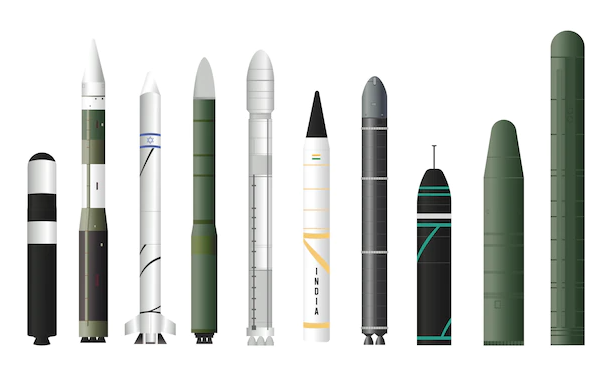Top 10 Most Dangerous Missiles in the World 2025
Introduction: What is a Powerful Missile?
Powerful missiles are a type of missile that can carry nuclear warheads. These missiles are usually very large and expensive, which is why they are not used often.
There are two types of powerful missiles: ballistic missiles and cruise missiles. Ballistic missiles have a higher range than cruise missiles, but they also take longer to reach their target. Cruise missiles can only fly over the ground and thus have a shorter range, but they can be used more often because they can be fired from aircraft carriers or other ships in the sea.
Why do countries own Missiles?
Missiles are a type of rocket that can be used to deliver nuclear warheads. Countries own them for a variety of reasons. They are often used as a deterrent, to protect themselves from nuclear attack, or to launch an attack on another country.
Some countries have missiles in order to deter other countries from attacking them. If the other country knows that they have missiles, it is less likely that they will attack because they know the retaliation will be very severe. These types of missiles are called deterrents and are often placed in strategic locations so that any potential attackers would have to go through them first before attacking the country with the missiles.
Missiles can also be used as a form of protection against nuclear attacks.If a country has these kinds of missiles, it can use them in retaliation if the other country uses its missiles first.
The Air Force has awarded two contracts to modernize the ground-based missiles that this branch of the armed services has been operating since the 1970s, according to the Air Force Nuclear Weapons Center, Public Affairs. The Air Force has a complete intercontinental ballistic missile weapons system program in existence, with the new Ground Based Strategic Deterrent (GBSD) missile aiming to create more mature technology and lower risks. The contracts were announced in August 2017 and were granted to Northrop Grumman Systems Corporation in Redondo Beach, California, and Boeing Company in Huntsville, Alabama.
The LGM-30 Minuteman III ICBM will be replaced by the new GBSD. Although this missile’s subsystems and particular components have been modified throughout the course of its more than 50-year operation, its essential infrastructure, which has remained operational throughout that time, is original equipment that was originally deployed in the early 1970s. The US Air Force maintains a nuclear defensive triad consisting of nuclear weapons that may be delivered in three ways strategically.:
-
Traditional strategic bombers
-
Intercontinental ballistic missiles (ICBMs)
-
Submarine-launched ballistic missiles (SLBMs)
The United States, Russia, China, and India are known triad powers, as are former triad powers like France and suspected triad powers like Israel. With North Korea’s rise and the threat of terrorism complicating nuclear strategy options, it’s no surprise that the international community is concerned about existing and emerging weaponry.
When examining the various armed forces in the United States and throughout the world, it is clear that there is a current trend toward strengthening and enhancing existing missile models, as well as building whole new missile systems that combine the latest technologies.
While earlier decades have been devoted to the three known triad nations dominating nuclear capabilities, recent news has been filled with revelations of contractual arrangements for advanced missiles and weapons technologies in countries previously assumed to be unarmed at these levels. Furthermore, military news is replete with reports of a wide range of weaker armaments being purchased at a rapid speed across the globe.
Currently, a wide range of long-established missile versions are in use around the world. While these immensely powerful weapons prepare for their next missions, even more powerful designs are being developed or are being realized as a result of recent high-budget programs.
ALSO READ: Top 10 Strongest Armies In The World
The surprising alignments of government agencies whose technology behemoths are embroiled in collaborative activities are also fascinating. One recent example is India and Russia’s collaboration on BrahMos. Military observers have noted that it’s impossible to predict what may come next after recent military parades and displays of new weaponry in Russia, North Korea, India, China, and Iran. Here’s a list of some of the most powerful missiles in the world right now, which are both admired and feared.
Top 10 Most Dangerous Missiles in the World
Here are the Top 10 Most Powerful Missiles in the World 2025:
- SS-N-30
- LGM-30 Minuteman III ICBM
- RS-28 Sarmat “Satan 2”
- DF-41
- Tomahawk Cruise Missile
- UGM-133 Trident II
- Jericho III
- Agni Missiles I-VI
- M51
- BGM-71 TOW 2B
1. SS-N-30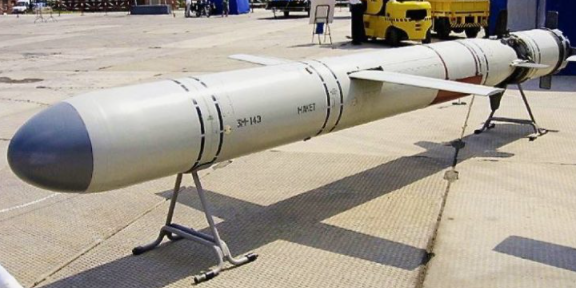
On October 7, 2017, Russian warships launched 26 cruise missiles. They were dispatched to Syrian opposition targets 1,000 kilometers away from the Caspian Sea warships. Even those who keep a frequent, well-trained eye on Russian and its military were surprised by these almost unknown missiles, according to the Pentagon. The attack is being interpreted as a sign to the rest of the world that Russia’s new missiles have established themselves as among the most advanced in the world. The missiles hit 11 targets, including a terrorist training camp, command centers, armament, oil, and munitions storage, and ammunition and explosives manufacturing sites, completing their mission.
2. LGM-30 Minuteman III ICBM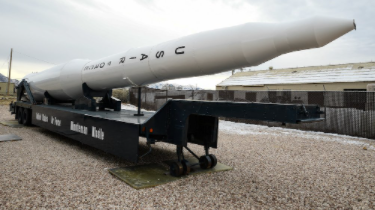
This missile is a part of the US’s strategic deterrent forces – it’s meant to deter enemies from attacking the country. It goes by the name ICBM because that’s its main function.:
-
The letter “L” is the way the Defense Department designates missiles which are launched from a hardened silo.
-
The letter “G” stands for a surface attack.
-
The letter “M” means it is a guided missile.
Since the late 1950s, Minuteman missiles have been in use. Quick reflexes, inertial guidance, great reliability, high precision, and significant, long-range target capabilities are all features of these weapons. More than 450 Minuteman III missiles were deployed in Wyoming, Montana, and North Dakota as of 2015. Since the deployment of the first Minuteman I missile in the 1960s, the series has been continuously modified and improved. These missiles, designed by Boeing, have the bare minimum of:
-
Three solid-propellant rocket motors with three stages of ATKs
-
Three stages of chemical systems thrust, including 203,158 pounds in the first stage, 60,793 pounds in the second stage, and 35,086 pounds in the third stage
-
A range of more than 6,000 miles
-
Speeds of approximately 15,000 mph
3. RS-28 Sarmat “Satan 2”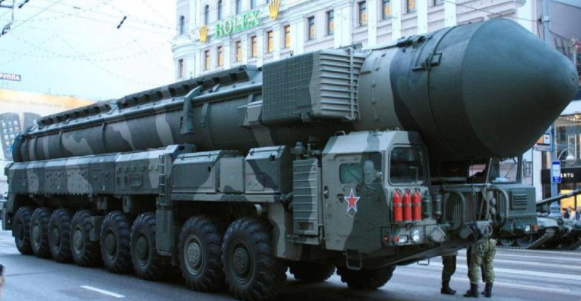
This warhead is capable of destroying targets flying between the North and South Poles. It was first shown on the Makeyev Rocket Design Bureau’s website in 2016. It will have a range of over 6,800 miles and be capable of destroying parts of the earth the size of France or Texas. This was confirmed by Russian Deputy Defense Minister Yuri Bosiov to TASS, the Russian state news agency. The warhead is a successor to the R-36M Voyevoda, and its existence was revealed shortly after Moscow announced that the arms reduction deal it had with the US had been suspended. The new Satan 2 missiles replace the SS-19 Satan missiles, reinforcing worries of a world without nuclear weapons.
4. DF-41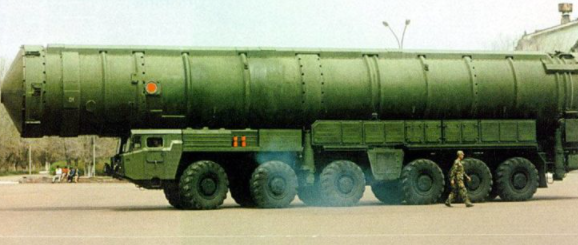
This is the most lethal intercontinental ballistic missile yet developed by China. It is, in fact, one of the most lethal in the world. Though the exact specifications are unknown, it is thought to have been put into operation in 2016 or 2017. Its range is claimed to be 12,000 kilometers, allowing it to target all of Europe, Russia, and the United States in as little as 20 to 25 minutes. It carries solid fuel as well as up to ten MIRVs (Multiple Independently Targetable Reentry Vehicles), which increase the vehicle’s total power. The internal Chinese satellite navigation system BeiDou makes it even more precise. The missile is transported into launch position by the Tian HTF5980 cross-country vehicle, which has a 16 X 16 meter special wheeled chassis.
5. Tomahawk Cruise Missile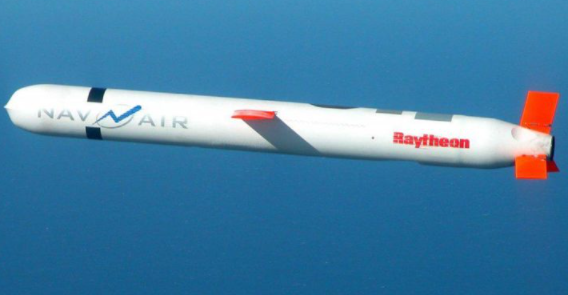
In 1984, the Tomahawk was first deployed. It was called after the Native American axe. It’s a long-range subsonic cruise missile meant to hit land targets that are either well protected or of great value. It has a top speed of roughly 550 mph and a range of nearly 1,500 miles. Using guidance systems adapted to specific missions, the missile can be guided to take evasive courses. The Tomahawk Land Attack Missile, or TLAM, is its official name. Both US and UK submarines, as well as US Navy surface ships, have successfully launched it.
The Tomahawk comes in a variety of variations, each with its own set of features. The latest models may be reprogrammed in flight using satellite communications to program alternate targets or reroute using GPS coordinates. It carries a nuclear warhead as well as extra bomblets, depending on the variant.
6. UGM-133 Trident II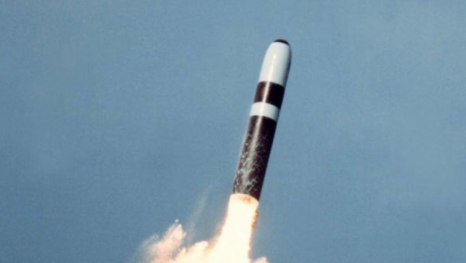
This submarine-launched ballistic missile was produced by Lockheed Martin. It is used by the navies of the United States and the United Kingdom. It has been in service since 1990, with modifications that have introduced larger payloads, longer ranges, and improved accuracy since its inception. These enhancements have allowed it to become one of the most effective first-strike weapons. It takes off within seconds after receiving the signal to break the surface of the sea and begin flying toward its target. The Trident II is made up of three solid-fuel rocket engines that fire in a predetermined order to propel the rocket forward.
It has a range of 4,230 nautical miles and can receive GPS updates via its MK 6 Astro-inertial guidance system. The missile has carried a range of payloads, and will receive a new warhead design for future engagements.
7. Jericho III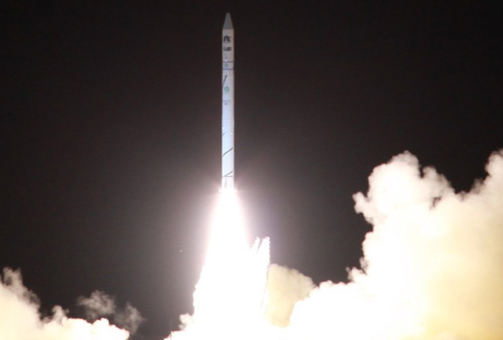
This is Israel’s first intercontinental ballistic missile. The short-range Jericho I and the medium-range Jericho II came before it. There is some evidence that it shares technologies with the Shavit space launch vehicle. The Jericho missiles have changed over time, and the most recent version features a radar-guided warhead with a long range. In actuality, it encompasses Asia, Africa, Europe, and the Middle East in its entirety. It can also reach the majority of North Oceania, as well as North and South America. As a result, it permits Israel Defense Forces to launch a nuclear bomb into almost any point on Earth, giving them immense power. The Jericho III re-entry velocity is so fast that missile defense systems deployed on Earth cannot handle them. It is thought that their silos are also impervious to many types of nuclear attacks.
8. Agni Missiles I-VI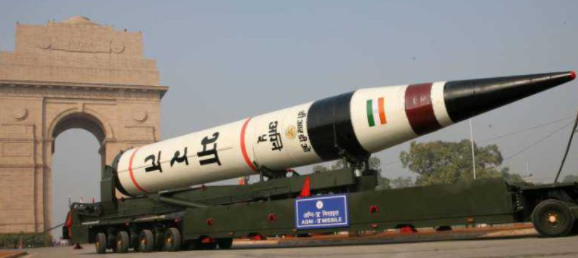
The Hindu god of fire inspired this family of long-range nuclear surface-to-surface ballistic weapons. The Agni I, II, and III are currently operational. As of January 2017, the Agni IV had finished its trials, and the Agni V is expected to enter service with the Indian Army between 2017 and 2018. The missiles come in a variety of ranges, payloads, and rocket stages. The Agni III is a very accurate rifle that is often regarded as one of the best in the intermediate range class. The series employs some of the most cutting-edge navigation and control technologies, which was developed in-house.
9. M51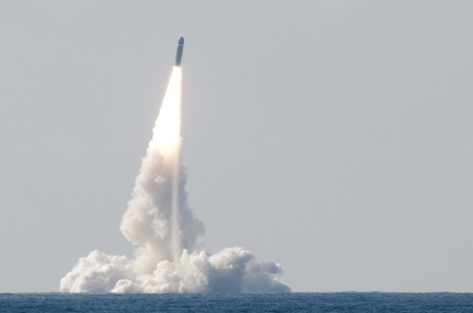
This French SLBM submarine missile is the country’s only ICBM, making it an important part of their military strike power. It’s a more powerful version of its predecessors, with a range of 8,000 kilometers. The three-stage solid-propellant weapon is capable of destroying targets all around the world. When fired, the missile travels hundreds of kilometers skyward, launching six to 10 MIRVs. Each of them carries a 107 kiloton thermonuclear warhead that speeds down to Mach 25 before launching penetration aids to ensure success. It takes only 20 minutes to traverse 4,500 kilometers, leaving no time for intended targets to respond.
10. BGM-71 TOW 2B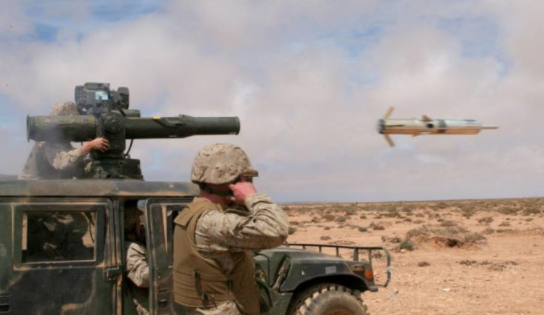
This latest version flies over a tank and launches projectiles at it, piercing the tank’s top armor. The previous versions were wired, however the most recent version is wireless. The TOW can be launched from any ground vehicle. In September 2017, Raytheon received orders worth more than half a billion dollars to construct these wireless, radio-controlled anti-armor weapons, which are currently employed by more than 40 armed forces around the world.
The designation TOW stands for Tube-launched, Optically tracked and Wire-guided missile. It has been active since 1970.:
-
Tube launched
-
Optically tracked
-
Wire guided
11. DF-31AG mobile intercontinental ballistic missile
This is China’s most recent improvement to the DF-31A, which was introduced in 2009. The main change is that this version of the missile can carry several warheads, which boosts China’s capacity to defeat US missile defenses. In July 2017, it was on display as part of the People’s Liberation Army’s 90th Anniversary Parade.
12. DeepStrike
This is a new tactical missile with a long range. Raytheon is developing it for the US Army, and it will be capable of attacking targets with pinpoint accuracy at distances of up to 309 miles, including those on land, sea, and in motion. They will replace the ATACMS, which was created during the Cold War to hit high-value targets at a range of 190 miles or less.
13. GBU-57A/B Massive Ordnance Penetrator
Boeing built the MOP, which is designed to reach the deepest bunkers on the planet. It will break through the toughest defenses and reach nuclear weapons hidden beneath the Earth’s surface. The US Air Force is planned to get twenty of these 30,000-pound, 20.5-foot-long, 32.5-inch-diameter piercing bombs.
14. AGM-114B/K/M Hellfire
This is a version of the AGM-114 Hellfire missile family. They’re laser-guided air-to-ground subsonic missiles. They are capable of defeating any tank currently on the market. When it comes to striking bunkers, structures, and helicopters, they have better accuracy power. The solid propellant rockets, developed by Lockheed Martin and Boeing, travel at subsonic speeds and carry shaped charge warheads with explosion fragmentation. The “fire and forget” missiles are utilized by the Marine Corps, Navy, and Army in the United States.
15. R-36M (SS-18 Satan)
The Russian Intercontinental Ballistic Missile is the world’s heaviest and most powerful intercontinental ballistic missile. It belongs to the R-36 model family, which has been in operation since the first cold-launched Soviet ICBMs in 1971. Since then, the various silo-launched missile types have proven to be quite capable. They can carry up to 10 MIRVs and 40 penetration aids and have high speeds and throw weights. They’re also difficult to track down. They can obliterate an area the size of three states, including Rhode Island, Vermont, and Maryland. However, the old missile family is gradually being phased out of service to make way for more powerful and modern systems.
16. SM-6
Over the Point Mugu Sea Range, the US Navy launched its new Long-Range Anti-Ship Missile (LRASM) from a strategic bomber B-1B Lancer. The long-range missile is meant to be launched from ships and airplanes without coming into contact with opposing fire. The subsonic missile is equipped with a blast fragmentation warhead and penetrator weighing 450 kilograms. Its purpose is to locate and target a specific ship among a group of ships. It has an onboard multimodal sensor that regulates navigation and transitioning throughout its journey till it reaches and impacts the target. The missile was created by Lockheed Martin to fit within the Navy’s “Distributed Lethality” operational concept.
17. Khorramshahr missile
This is Iran’s newest ballistic missile, which was revealed as part of a military parade in Tehran. The parade celebrated the start of the Iran-Iraq War in 1988, and the rocket bears the name of the first city hit in southwest Iran. The missile has a range of 1,243 miles and can carry multiple targetable reentry vehicles (MIRV) within a target range that is somewhat shorter. The missile was entirely designed and manufactured in the country, and while experts estimate it to be only medium-range at most, it represents a fresh push to bolster the country’s military capabilities with newer and more powerful weaponry.
18. R-29RMU2 Layner
The range of this Russian missile is 11,000 kilometers. It has a capacity of 12 warheads. It is the newest SLBM in Russian service, having only been operational since 2014. It’s an R-29RMU Sineva that’s been significantly updated. The new Layner is capable of carrying low-yield warheads weighing up to 100kt each. It’s also adaptable, as it allows for a reduction in the number of warheads in order to replace them with decoys that boost survivability.
19. Modified RS-24 Ballistic Missile
Russia just announced the successful testing of its updated RS-24 Yars variant. The Yars is a three-warhead intercontinental ballistic missile. The experimental design aims to produce a more precise weapon that is more difficult to track and intercept. The missile was launched in northeastern Arkhangelsk Oblast and flew roughly 3,400 miles to hit the Kura Missile Test Range in Kamchatka Krai across the country. Plesetsk Cosmodrome was used to launch it. There is some speculation that this missile’s modification is an attempt to circumvent the Strategic Arms Reduction Treaty, which limits the amount of warheads accessible to Russian and US forces.
One missile can effectively deliver more damage by combining three multiple warheads into one.
20. Brahmos
This missile, developed by India and Russia, is the world’s fastest cruise missile. It has a top speed of 2.8 to 3.0. A hypersonic variant, codenamed BrahMos-II, will reach speeds of Mach 7 to 8, allowing for faster assaults from the air. It may be launched from planes, submarines, ships, and land, and can fly for up to 10 meters above the ground. India’s Defense Research and Development Organization and Russia’s NPO Mashinostroeyenia collaborated on the short-range supersonic cruise ramjet missile.
The BrahMos Aerospace Group was founded by the two government entities to research and develop Russian sea-skimming missile technology. The name is a combination of two rivers in Russia and India: the Moskva and the Brahmaputra. The new combined missile project’s purpose is to hit defended targets with pinpoint accuracy.
Exploring the positive and negative impacts of a powerful missile
A powerful missile is a weapon that can cause significant damage to an area, and can be used in the case of a war. The power of the missile depends on its payload, what it is made of, and how far it travels.
There are many different types of missiles, which are designed for different purposes. The most common type of missile is a ballistic missile. Ballistic missiles are designed to be fired into space before reentering the atmosphere at high speeds.
The military has been developing missiles for centuries as they provide a cost-effective means to deliver nuclear warheads or conventional explosives over long distances with precision accuracy without risking pilots or air crew.
Conclusion: What are the Best Practices for Developing Powers Missiles?
The best practices for developing a missile are to have the core components of the missile be as light as possible.
The best practices for developing a missile are to have the core components of the missile be as light as possible. The projectile, propellant, and fuze should be as light as possible so that they can increase projectile range and velocity. The more time it takes for an enemy’s radar to detect a projectile, the better chance it has at reaching its target.
